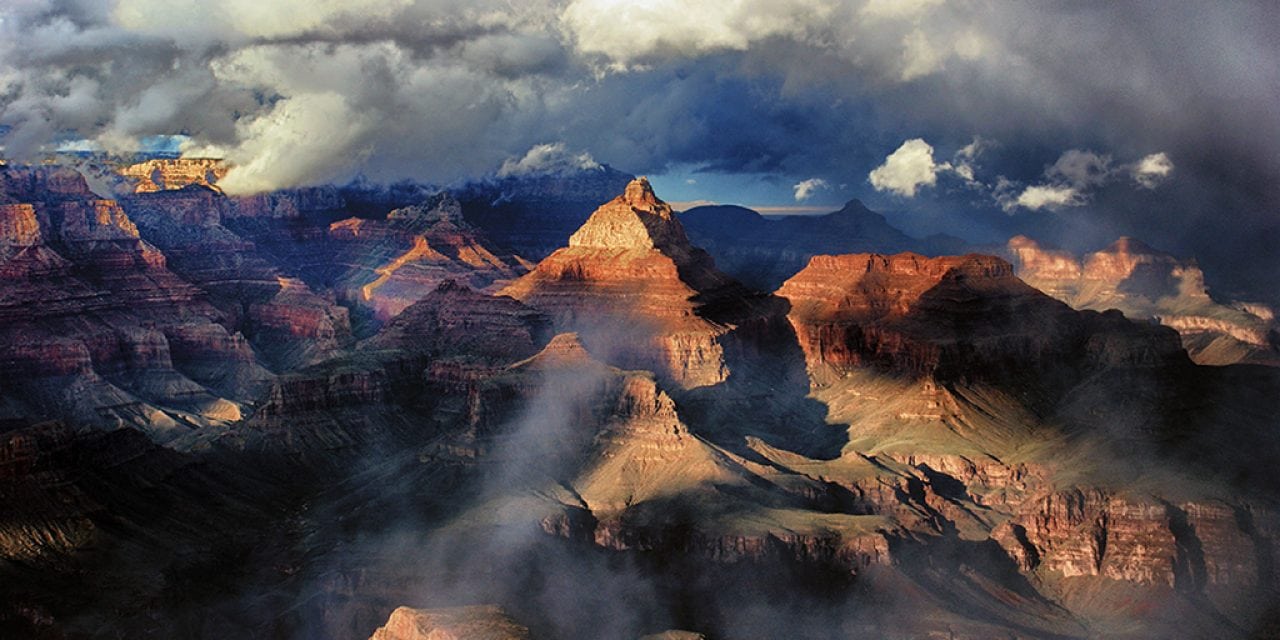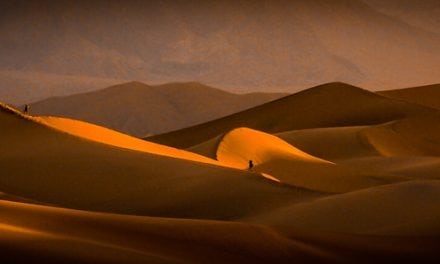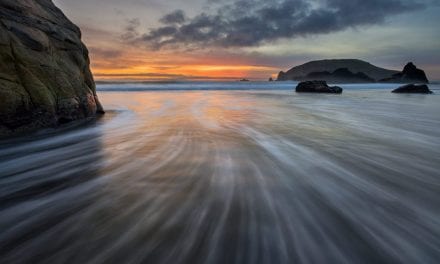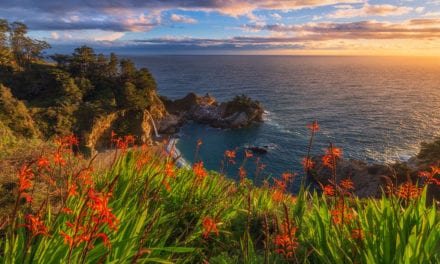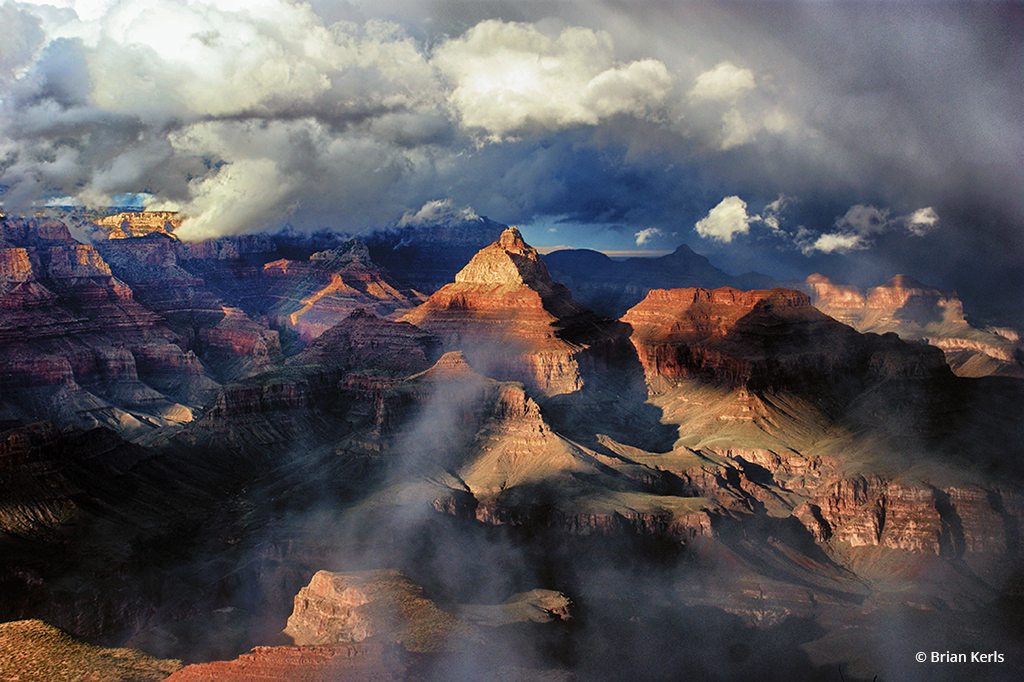
With its steep-sided, red rock walls carved by the Colorado River and its visually overwhelming size, the Grand Canyon in northern Arizona is one the most recognizable natural landmarks in the United States. While I had long been fascinated by photographs of its immense size and intricate and colorful landscape, I had yet to see it firsthand. The opportunity to experience it in person eventually presented itself in November 2010 as my wife and I were driving from Denver, Colorado, to Sedona, Arizona, for a long weekend vacation and decided to take a quick detour through Grand Canyon National Park.
After stopping overnight in Page, Arizona, we headed south along U.S. Route 89, roughly following the Colorado River as it wound through the desert plains past the striking Horseshoe Bend, toward the east entrance to the park. It was a mild fall day with sunny skies and few clouds to interrupt the wide-open desert vistas—perfect for sweeping views of the immense Grand Canyon landscape. As we turned west onto Arizona State Route 64 and began to ascend to the east entrance, there were notable changes in the scenery and the weather. In the distance, the cloud cover was increasing and the sky was growing darker, and behind us the desert plains receded and were replaced by a scrubby pine forest. Passing through the park entrance, the pine forest thickened along with the cloud cover. Heavy gray skies settled in over the canyon, a brisk wind picked up, and a light rain began to fall. We stopped at a few of the viewpoints and turnouts; however, opportunities to view and photograph the canyon were limited by the poor weather.
Hopeful that the bad weather would soon pass, we pressed on along the winding park road that skirts the South Rim of the canyon. Rather than improve, the storm quickly worsened, with increasing winds, falling temperatures, and heavy rain and hail that turned to snow at higher elevations. It was slow going, and the poor visibility eventually forced us to pull off near Grandview Point and wait out the storm for a while.
After some time, the rain began to let up, and it looked like there would be a small break in the storm. In anticipation, I readied my photography gear in the car, and as the rain tapered off, I got out to scout some nearby vantage points. To the east, much of the canyon was still obscured by the storm; however, streaks of sunlight were starting to break through the clouds to the west, and I was able to make out more of the canyon’s details. I set up my camera and tripod, focusing on the closest canyon walls and rock formations to capture their intriguing layers and texture, and captured this dramatic westward view with the remaining storm clouds and colorful peaks and layers of the canyon illuminated in the late afternoon light. While it seemed for a while that we’d come up empty on my first visit to the Grand Canyon due to the gamut of weather we experienced—sunshine to wild winds, gigantic dark curtains of rain, hail and snow—it ended up being a very memorable experience in which I was able to capture one of my favorite images.
See more of Brian Kerls’ photography at briankerlsphotography.com.
Sony a350, Sony DT 16-105mm F3.5-5.6 at 45mm, Manfrotto 190XPROB tripod. Exposure: 1/125 sec., ƒ/8, ISO 100.
Explore more great photography destinations in our Behind The Shot section.
The post Behind The Shot: Clouds Part Over The Canyon appeared first on Outdoor Photographer.

